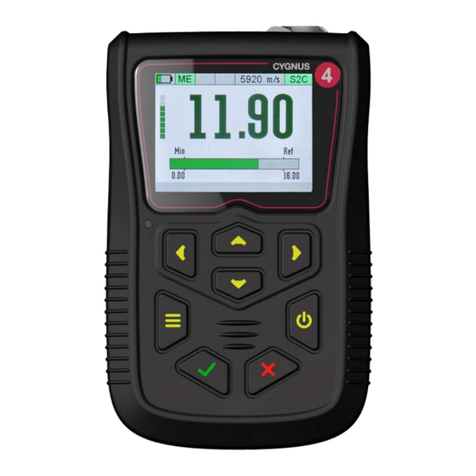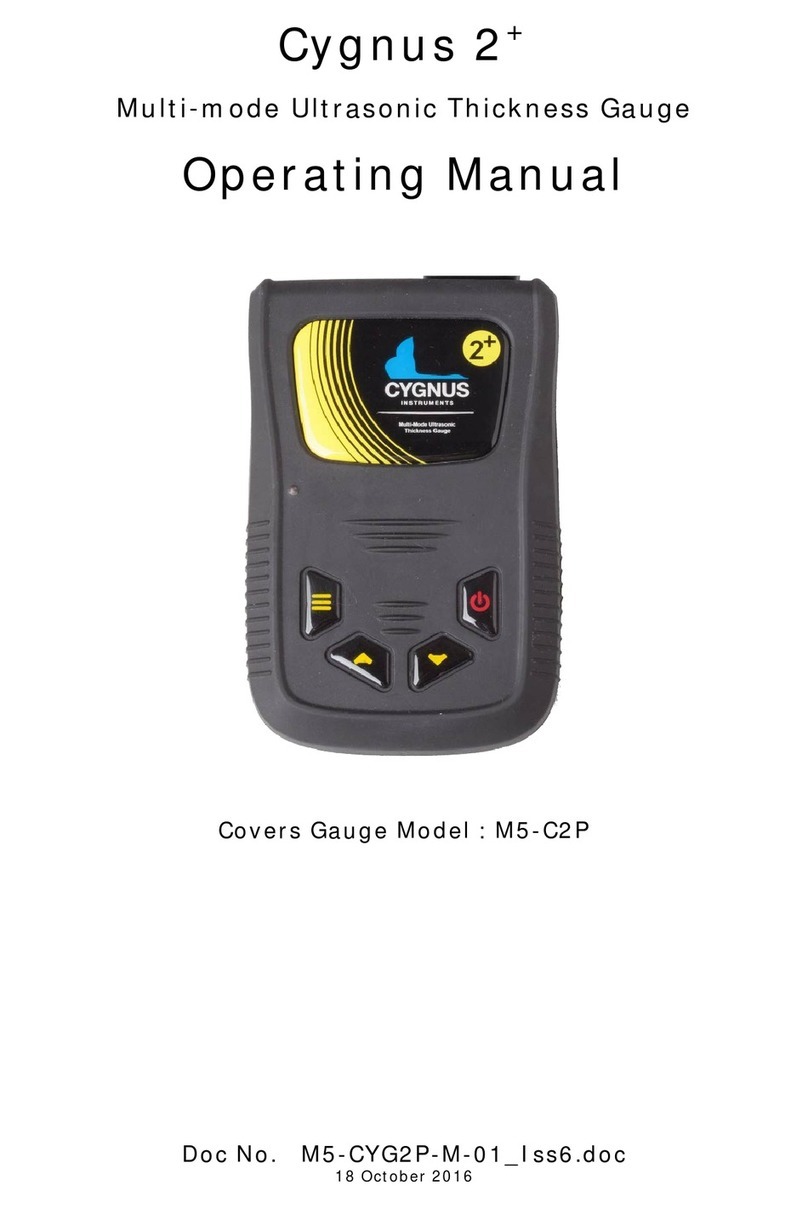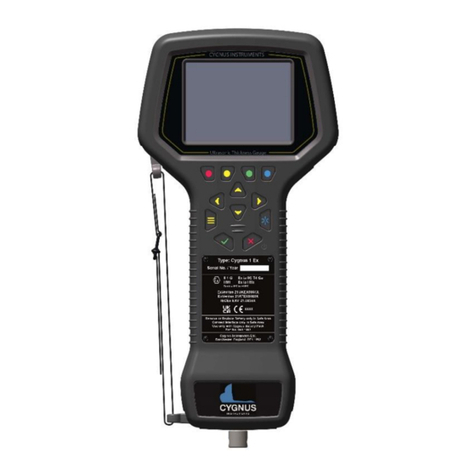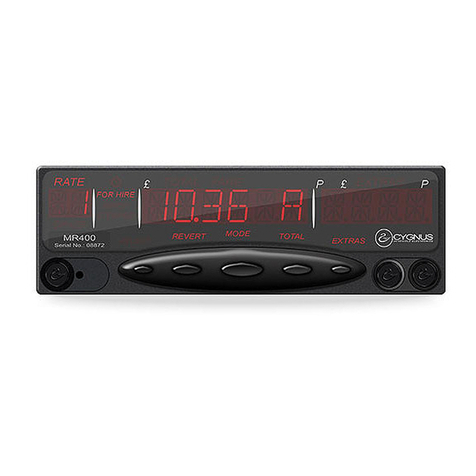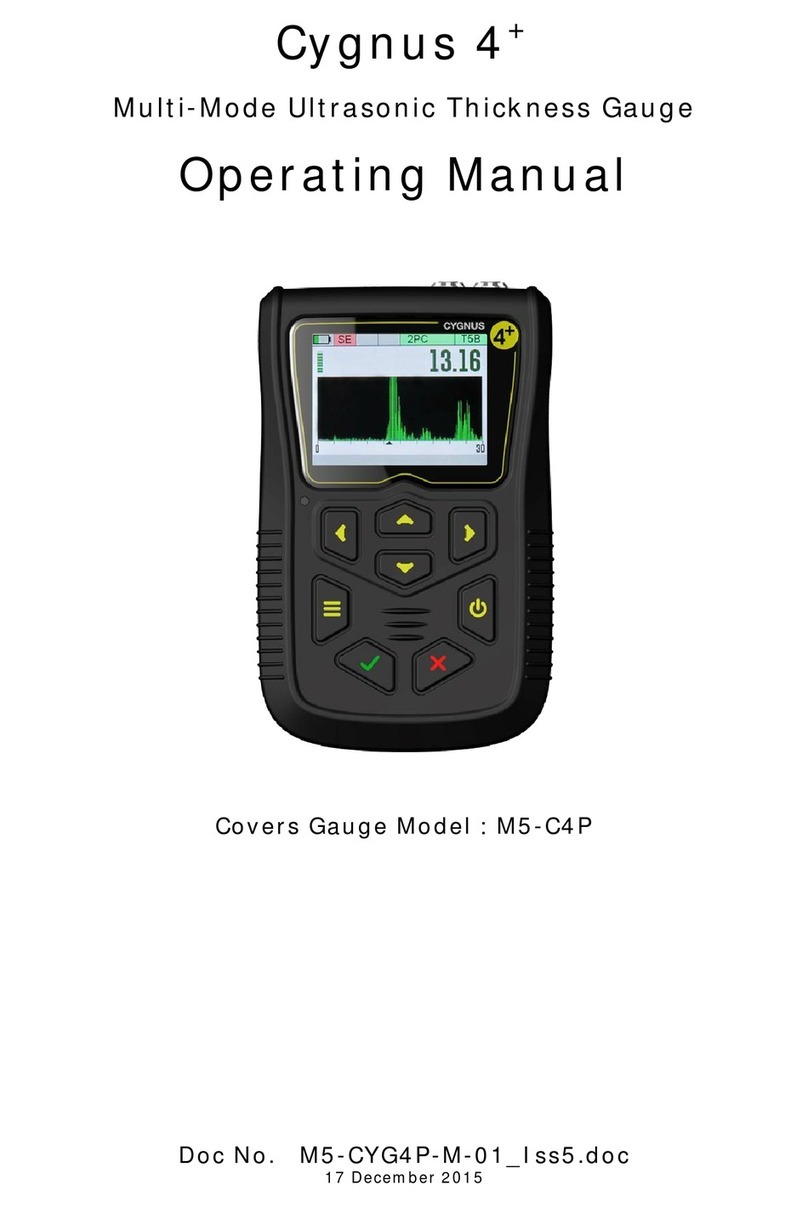Cygnus ROV UTM - Operating Manual
Page 3 of 60
Manual Gain.....................................................................31
Velocity of Sound and Material List ......................................31
Measurement range for A-Scan Range..................................31
7. Calibration and Zero .......................................................33
Why should I Calibrate?........................................................33
Calibrating to a Known Thickness ...........................................34
Zeroing the Probe................................................................35
8. CygLink ...........................................................................37
Installing CygLink ................................................................37
Requirements...................................................................37
Upgrading........................................................................37
Installing .........................................................................37
COM Port Numbers ..............................................................38
Setting the COM Port Manually............................................38
Finding your COM Port Number ...........................................38
Connecting to the Instrument................................................39
First time USB Connection..................................................39
Connecting the Instrument to CygLink for the First Time.........40
Connecting to the Instrument Afterwards .............................41
Disconnecting from the Gauge ............................................42
Manual Connection Settings................................................42
CygLink Surveys and Data Logging.........................................43
Editing the Survey Details ..................................................44
Editing the Survey Group Details.........................................45
Producing a Survey Report Document ..................................45
Logging Measurements Directly in CygLink ..............................46
Reference and Minimum Thickness Criteria ...........................46
Pre-Set Measurement Comments List...................................46
Adding Comments or Notes to a Measurement ......................47
To Change the COM Port number assigned by Windows®...........48
Opening Device Manager....................................................48
CygLink Trouble Shooting .....................................................49
Connection Problems –USB Drivers.....................................49
Wiring Problems ...............................................................50
9. Care and Servicing ..........................................................51
Cleaning the Instrument .......................................................51
Environmental.....................................................................51
Repairs ..............................................................................51
Returning the Gauge for Servicing..........................................51












